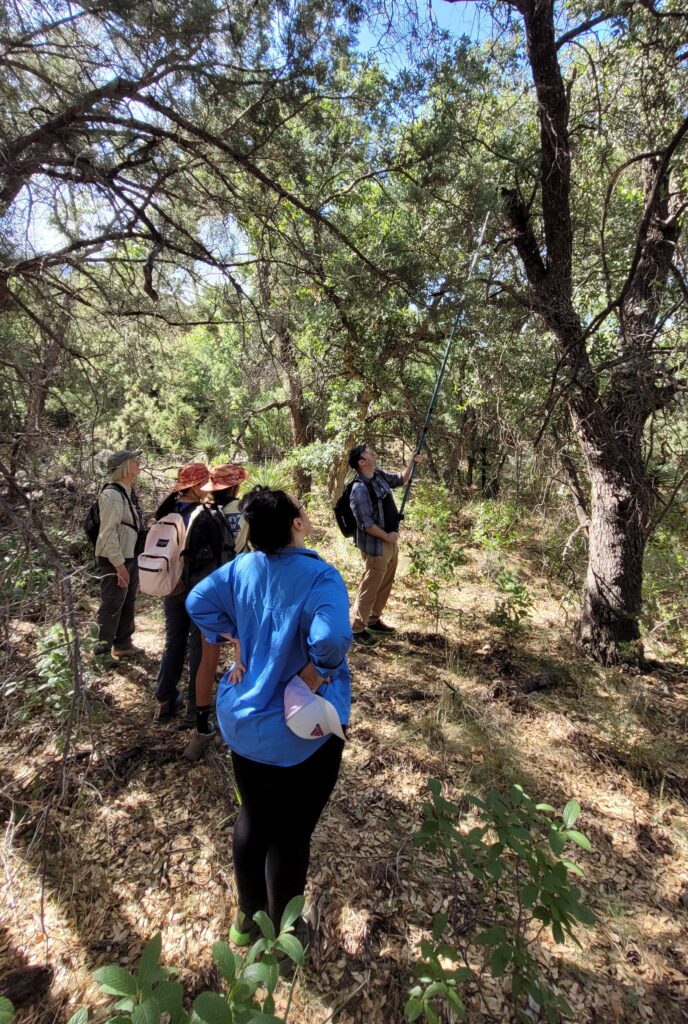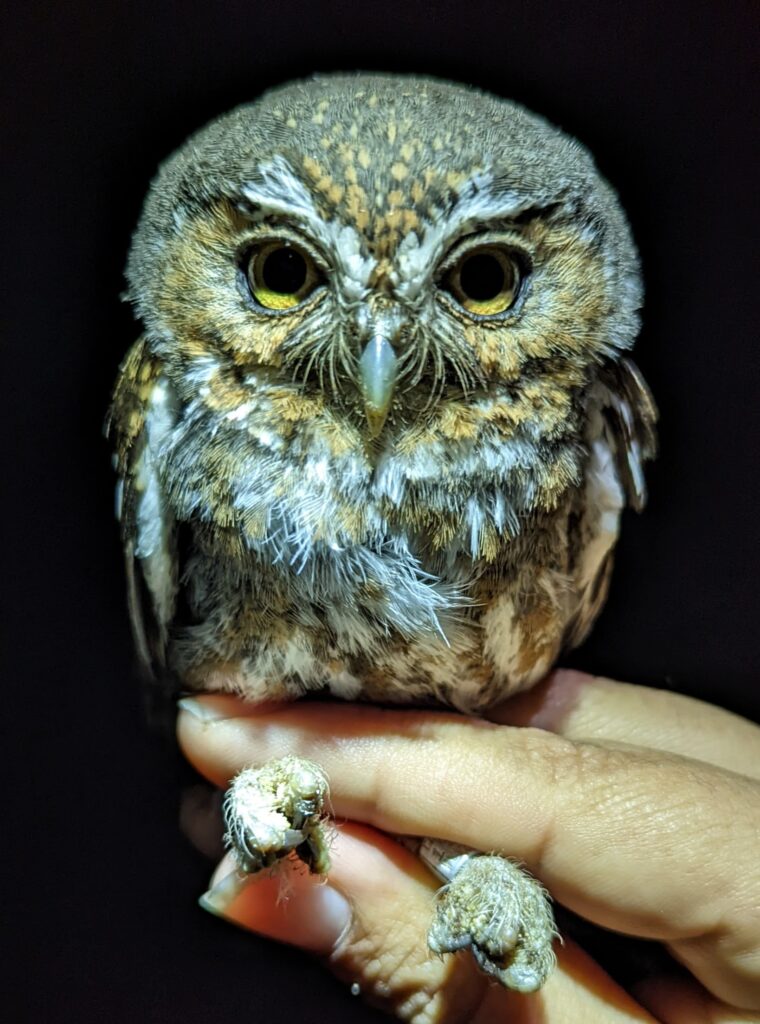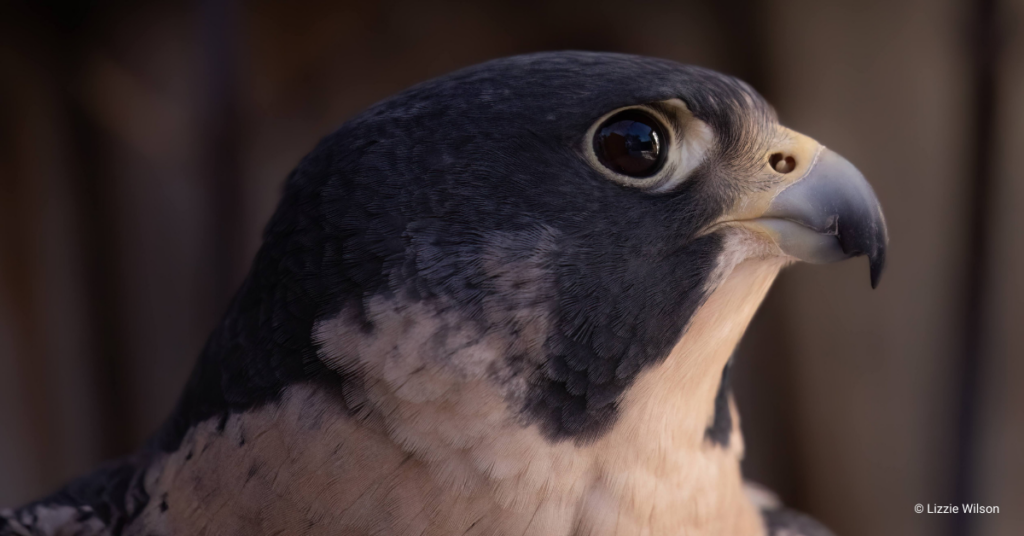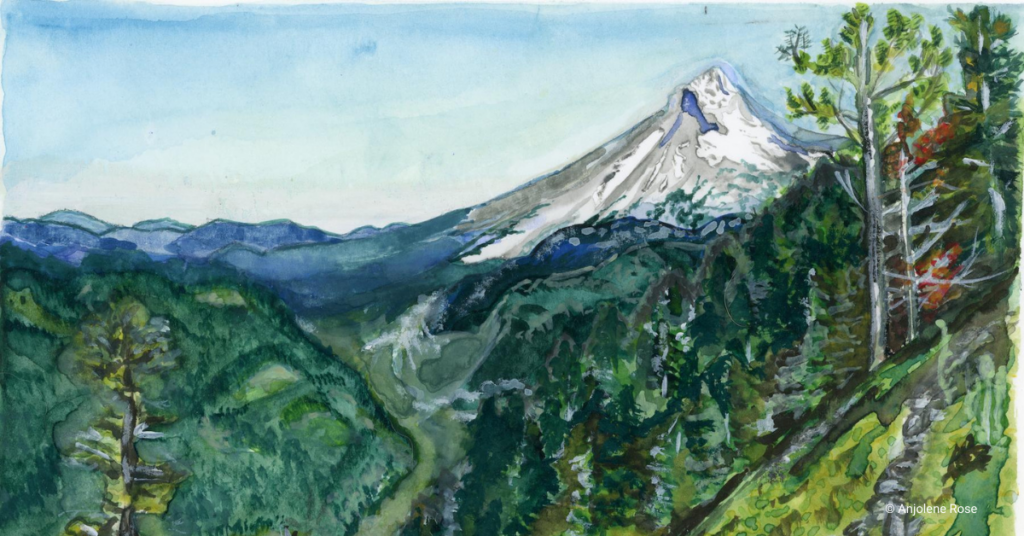On dark Arizona nights, researchers move silently through the forest in search of owls. Treading carefully, they hear maniacal laughter in the trees, scolding them to stay away. Looking up, they find the culprit. That call belongs to the Elf Owl, the smallest known owl in the world.
Despite this claim to fame, the Elf Owl, like most owls, is considered a knowledge gap species. According to Dave Oleyar, Director of Long-term Monitoring and Community Science at HawkWatch International, this means we have little to no information on their habitat news, reproduction or population trends.
“Without this knowledge we cannot know if they require urgent attention or if their populations are stable, or what habitats to maintain to ensure they persist.” Oleyar said.

For HawkWatch International, bringing in volunteers is the key to efficiently solving knowledge gaps in raptor species. Simultaneously, volunteers gain a deeper understanding of their environment.
“In addition to the research and monitoring itself, these programs engage non-scientists of all ages in conservation work, making science more tangible and building connections to the species and landscapes we work in,” Oleyar said.
“Following Forest Owls” is an example of a community science driven program at HawkWatch International. Nikki Wayment, the Executive Director of HawkWatch International, has co-led many of the research trips.
“The beauty of the forest owl project is that it closely aligns with our mission—doing long-term monitoring, direct conservation and engaging and educating the public,” Wayment said. “[The research trips] give people an opportunity to engage with the programs, the scientists, the birds, the landscapes, change people’s perspectives and makes them think about the world they live in in a different, bigger way.”
Oleyar leads the “Following Forest Owls” program and has taken many groups to study forest owls in northern Utah and southeastern Arizona. The program focuses on the ecology of six small forest owl species including their communities and the tree hollows they roost in. To date, 428 people from 38 states and 12 countries ranging in ages 14-81 have participated in the program. They have helped collect data on over 3,000 tree hollows and trapped hundreds of owls.
Although these week-long expeditions have great value in helping close these knowledge gaps, they are also life changing for the participants themselves. “These weeks can be transformational in terms of how people view science, the natural world, owls and holes in trees,” Oleyar said. “For me, that is just as important to what we do–if not more so–than our eventual research outputs.” Participants learn a wide array of information, including species calls, and participate in mist net workshops to prepare for nights of owl surveying and data collection.
The “Following Forest Owls” research program has led to significant discoveries about forest owl species. This includes the Elf Owl, which weighs in at an average of only 40 grams, or 8 nickels.
“We commonly encounter Elf Owls, but they are the most challenging of the species we study to capture,” Oleyar said. “They respond readily to [voice call] playback but sit high in the canopy and vocalize back, infrequently moving.” Scientists can learn so much about the species by trapping just one of these difficult to study birds.
One Elf Owl in particular led to a remarkable discovery. The bird, initially banded in 2017, was recaptured in 2022, making it the oldest known wild Elf Owl based on banding records at 5 years and 11 months old.
“Every Elf Owl capture is exciting so the team that trapped the bird were very excited,” Oleyar said. “The full-time researchers on the team get even more excited than expedition participants about previously banded birds because for us, that’s why we put the band on in the first place, to hopefully see that same bird again.”

Each banded Elf Owl is one step closer to closing the knowledge gap of this species. “These recaptures really add to the story of each bird, and as we gather more of them they tell us more about the species in general,” Oleyar said.
Contrary to Elf Owls, Whiskered Screech-Owls, another forest owl species, are far easier to catch. “When we encounter them, they respond quite strongly and readily fly at a perceived intruder (our speaker), making them the easiest to capture (relative) of the small owls we study,” Oleyar said.

Due to these owls’ responsive nature, HawkWatch International will be piloting the first ever movement study of Whiskered Screech-Owls in the summer of 2024. “We will place the tracking unit on adult Whiskered Screech-Owls that we capture early in the season,” Oleyar said.“After 2-3 weeks we will try to recapture the owl to recover the unit and the data it holds, thanking the owl for sharing with science where it goes and releasing it back into the night.” Tracking Whiskered Screech-Owls will help identify the otherwise out of reach nesting locations, something that currently not much is known about.
Without understanding and researching owls, owl conservation work is limited. Filling knowledge gaps opens the door to protection of these species and beyond. “Understanding the population and protecting species before they become endangered or extinct has a lot of value,” Wayment said. “Conservation is increasingly important in the world we live in with climate change, overpopulation, all the issues we are facing as a human population makes wildlife conversation super important.”
Oleyar shares the same sentiment. “Owls are a pinnacle of evolution, so highly and perfectly adapted to make a living at night with low-light vision, high-precision hearing, silent flight, and plumage that lets them virtually disappear into the environment.” Through his research, Oleyar said he hopes that disappearance is only virtual—not reality.
Want to support this research? Double your gift thanks to our match through 12/31/23: https://hawkwatch.org/forestowls/
This blog was written by Louisa Smith, a student at the University of Minnesota studying Agricultural Communications and Marketing and Wildlife Conservation.
Photos by Dave Oleyar, Jesse Watson, and Matt Poole.



